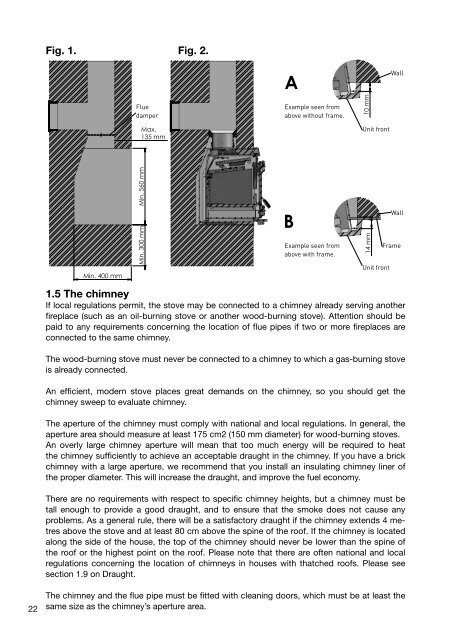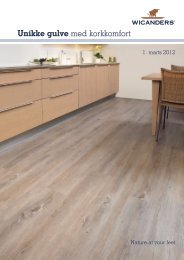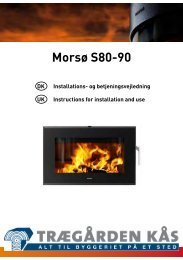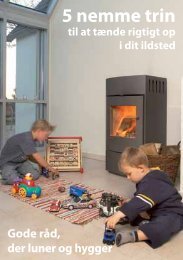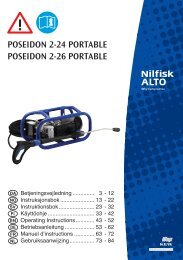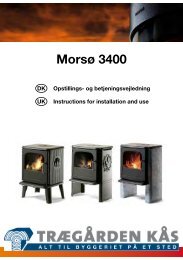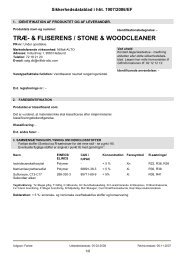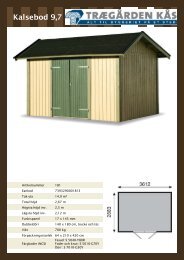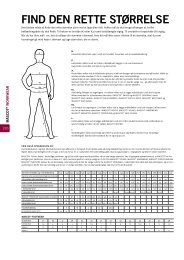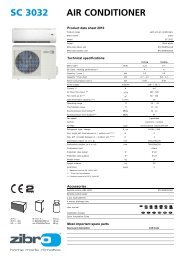Morsø 1710
Morsø 1710
Morsø 1710
Create successful ePaper yourself
Turn your PDF publications into a flip-book with our unique Google optimized e-Paper software.
Fig. 1. Fig. 2.<br />
Flue<br />
damper<br />
A<br />
Example seen from<br />
above without frame.<br />
10 mm<br />
Wall<br />
Max.<br />
135 mm<br />
Unit front<br />
Min. 400 mm<br />
Min. 560 mm<br />
Min. 300 mm<br />
1.5 The A-A chimney<br />
B-B<br />
If local regulations permit, the stove may be connected to a chimney already serving another<br />
fireplace (such as an oil-burning stove or another wood-burning stove). Attention should be<br />
paid to any requirements concerning the location of flue pipes if two or more fireplaces are<br />
connected to the same chimney.<br />
5<br />
4<br />
B<br />
Example seen from<br />
above with frame.<br />
14 mm<br />
Unit front<br />
Wall<br />
Frame<br />
M<br />
A-A<br />
The wood-burning stove must 3 never be connected to a chimney to which a gas-burning stove<br />
is already connected.<br />
An efficient, modern stove places great demands on the chimney, so you should get the<br />
7<br />
chimney sweep to evaluate chimney.<br />
K (1 : 2)<br />
Date of print: 17-05-2010<br />
The aperture of the chimney must comply with national and local regulations. In general, the<br />
aperture<br />
6<br />
area should measure<br />
2<br />
at least 175 cm2 (150 mm diameter) for wood-burning stoves.<br />
An overly 1 large 8 chimney aperture will mean that too much energy will be required to heat<br />
the chimney<br />
N-N<br />
sufficiently to achieve an acceptable draught in the chimney. If you have a brick<br />
chimney with a large aperture, we recommend that you install an insulating chimney liner of<br />
the proper diameter. This will increase the draught, and improve the fuel economy.<br />
22<br />
There are no requirements with respect to specific chimney heights, but a chimney must be<br />
H (1 : 2)<br />
tall enough to provide a good draught, and to ensure that the smoke does not cause any<br />
problems. As a general rule, there will be a satisfactory draught if the chimney extends 4 metres<br />
above I (1 : 2) the stove and at least 80 cm above the spine of the roof. If the chimney is located<br />
along the side of the house, the top of the chimney should never be lower than the spine of<br />
the roof or the highest point on the roof. Please note that there are often national and local<br />
regulations concerning the location of chimneys in houses with thatched roofs. Please see<br />
section 1.9 on Draught.<br />
The chimney and the flue pipe must be fitted with cleaning doors, which must be at least the<br />
same size as the chimney’s aperture area.


